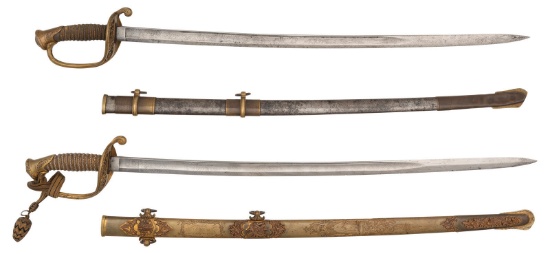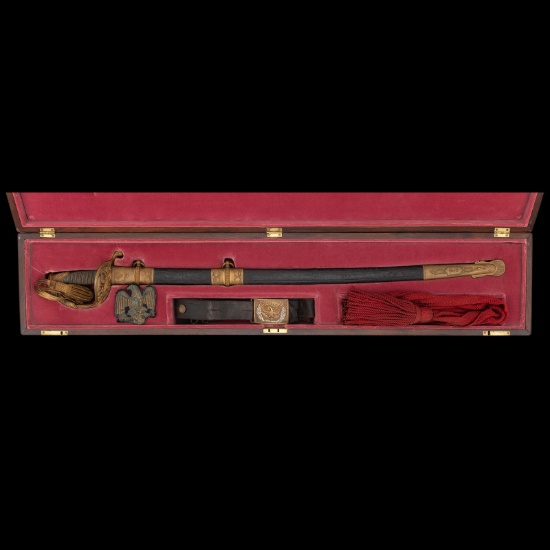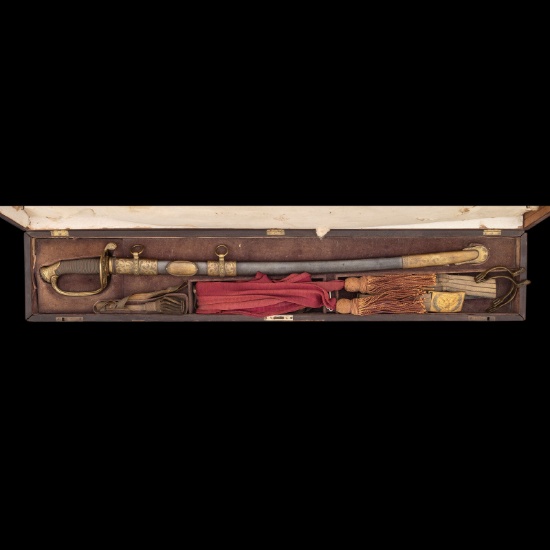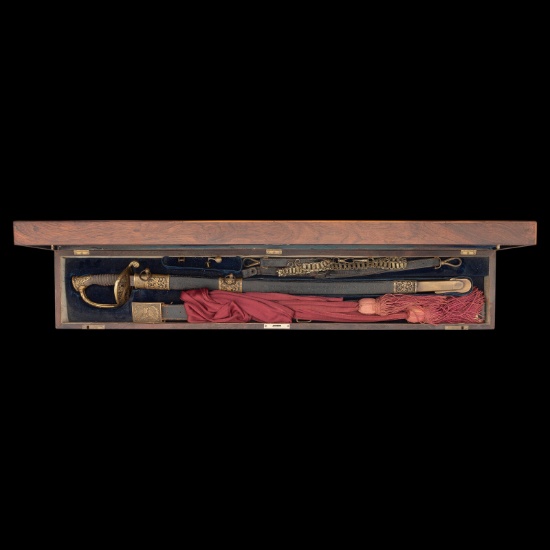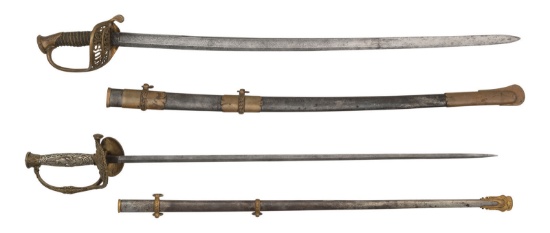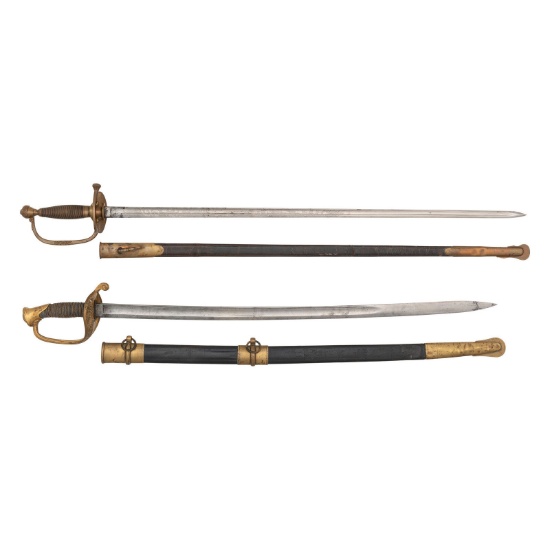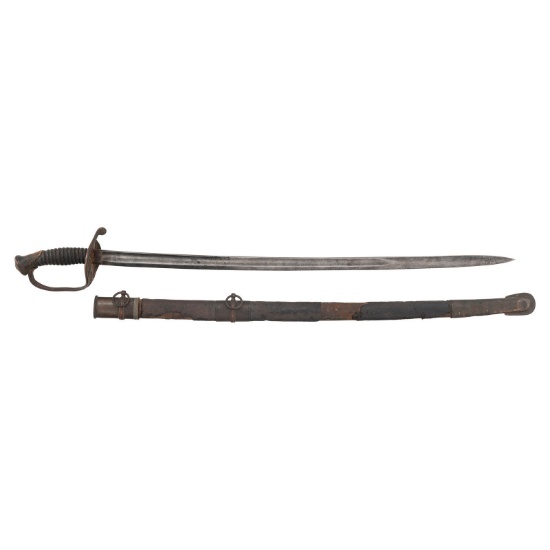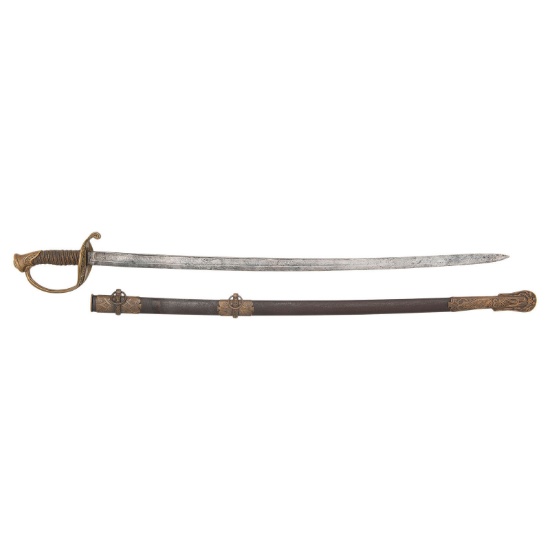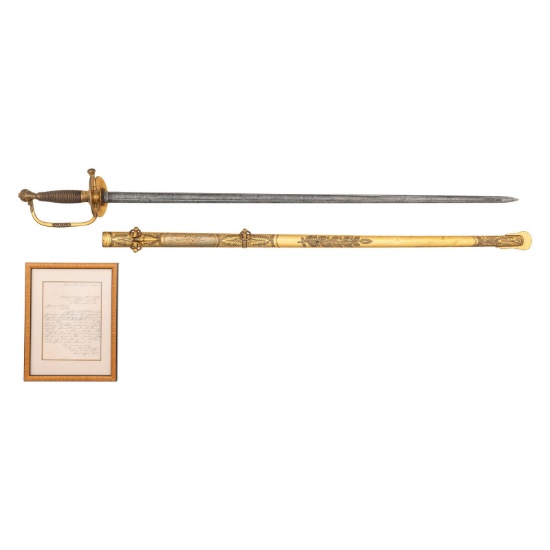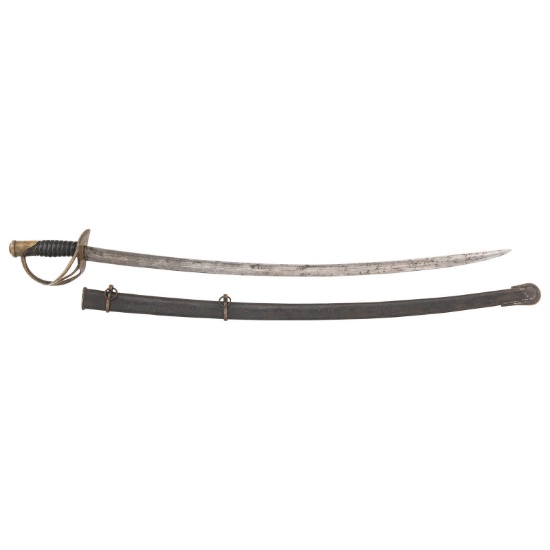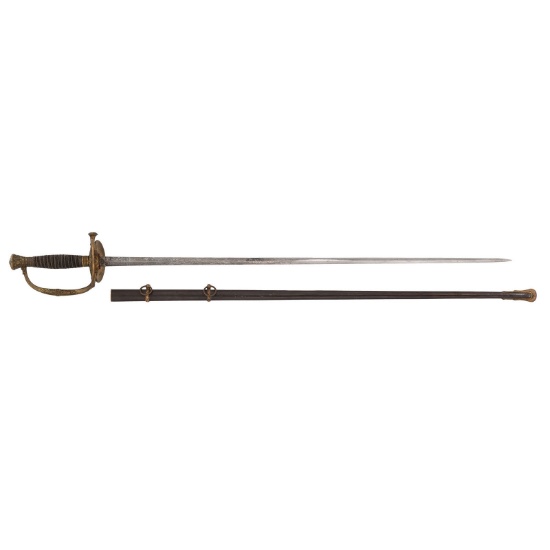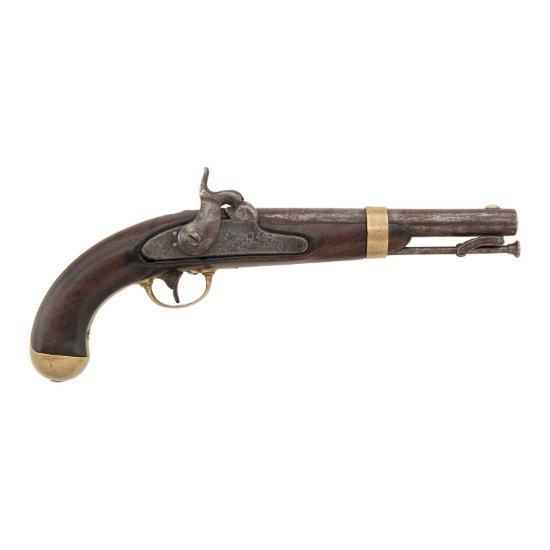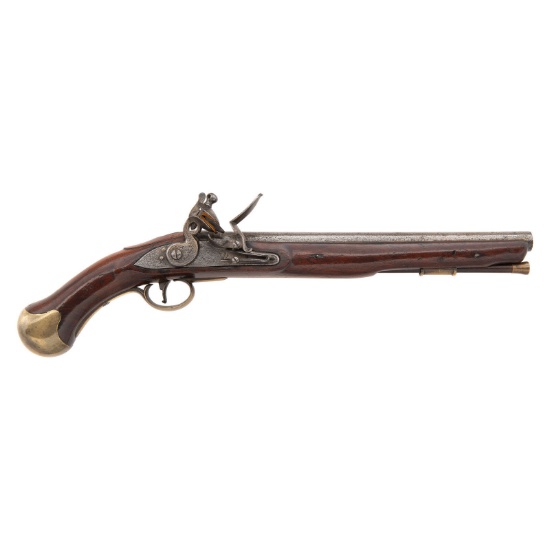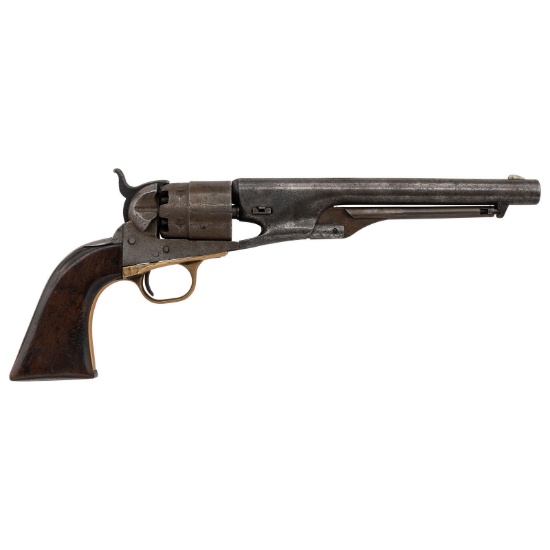Special Terms
These Conditions of Sale set out the terms upon which Freeman’s | Hindman, a dba of Hindman LLC (“we,” “us,” or “our”) sells property by lot in this catalogue. You agree to be bound by these terms by registering to bid and/or by bidding in our auction.
A. BEFORE THE AUCTION
1. LOT DESCRIPTIONS AND WARRANTIES
Our description of a lot, any statement of a lot’s condition, and any other oral or written statement about a lot—such as its nature, condition, artist, period, materials, dimensions, weight, exhibition or publication history, or provenance— are our opinion and shall not to be relied upon by you as a statement of fact. Except for the limited authenticity warranty contained in paragraphs E and F below, we do not provide any guarantee of our description or the nature of a lot.
2. CONDITION
The physical condition of lots in our auctions can vary due to age, normal wear and tear, previous damage, and restoration/repair. All lots are sold “AS IS,” in the condition they are in at the time of the auction, and we and the seller make no representation or warranty and assume no liability of any kind as to a lot’s condition. Any reference to condition in a catalogue description or a condition report shall not amount to a full accounting of condition and may not include all faults, inherent defects, restoration, alteration, or adaptation. Likewise, images in our catalogue may not depict a lot accurately, as colors and shades may appear different in print or on screen than on physical inspection. We are not responsible for providing you with a description of a lot’s condition in the catalogue or in a condition report.
3. VIEWING LOTS
We offer pre-auction viewings, either scheduled or by appointment, that are free of charge. If you believe that the catalogue description or condition reports are not sufficient, we suggest you inspect a lot personally or through a knowledgeable representative before you bid on a lot to make sure that you accept the description and its condition. We recommend you hire a professional adviser if you are not familiar with how to address the nature or condition of an object. Freeman’s | Hindman has several salerooms throughout the country and the location of sales, or individual items may vary. It is important to check our website and be aware of where each lot is located, for both viewing and for shipping purposes.
4. ESTIMATES
Estimates of a lot account for the condition, rarity, quality, and provenance of the object and are based upon prices realized for similar objects in past auctions. Neither you nor anyone else may rely on our estimates as a prediction or guarantee of the actual selling price of a lot or its value for any other purpose. Estimates do not include the buyer’s premium, any applicable taxes, and any other applicable charges.
5. WITHDRAWAL
We may, in our sole discretion, withdraw a lot from auction at any time prior to or during the sale and shall have no liability to you for our decision to withdraw.
B. REGISTERING TO BID
1. GENERAL
We reserve the right to reject any bid. By participating in the sale, you represent and warrant that:
(a) The bidder and/or purchaser is not subject to trade sanctions, embargoes or any other restriction on trade in the jurisdiction in which it does business as well as under the laws and regulations of the United States, and is not owned (nor partly owned) or controlled by such sanctioned person(s) (collectively, “Sanctioned Person(s)”); (b) Where you are acting as agent, your principal is not a Sanctioned Person(s) nor owned (or partly owned) or controlled by Sanctioned Person(s); and
(c) The bidder and/or purchaser undertakes that none of the purchase price will be funded by any Sanctioned Person(s), nor will any party be involved in the transaction including financial institutions, freight forwarders or other forwarding agents or any other party be a Sanctioned Person(s) nor owned (or partly owned) or controlled by a Sanctioned Person(s), unless such activity is authorized in writing by the government authority having jurisdiction over the transaction or in applicable law or regulation.
2. NEW BIDDERS
New bidders must register at least twenty-four (24) hours before an auction and must provide us with documentation of their identity.
(a) Individuals must provide photo identification (driver’s license, non-driver ID card, or passport) and, if not shown on the photo identification, proof of current address (a current utility bill or bank statement). (b) Corporate clients must provide a Certificate of Incorporation or its equivalent bearing the company’s
name and registered address, together with documentary proof of directors and beneficial owners. (c) Trusts, partnerships, offshore companies, and other business entities must contact us in advance of the auction to discuss our requirements. If we are not satisfied with the information you provide us in our bidder identification and other registration procedures, we may refuse to register you to bid, and if you make a successful bid, we may cancel the contract for sale between you and the seller. New bidders may be required to provide us with a financial reference and/or a deposit before we allow them to bid.
3. RETURNING BIDDERS
If you have not bought anything from us recently, then we may require you to register as a new bidder, as described in the paragraph above. Please contact us at least twenty-four (24) hours prior to the auction.
4. BIDDING FOR ANOTHER PERSON
If you are bidding as an agent on behalf of another person, your principal must be a registered bidder and must provide us with written authorization allowing you to bid. You, as the agent, shall accept personal liability to pay the purchase price and all other sums due unless we have agreed in writing before the auction that you are acting as an agent on behalf of your principal and that we will only seek payment from your principal.
5. BIDDING IN THE SALEROOM
If you wish to bid in the saleroom, you must first acquire a bidding paddle at least thirty (30) minutes before the auction.
6. OUR BIDDING SERVICES
We offer the following bidding services as a convenience to our clients, subject to these Conditions of Sale. We shall not be responsible for any error, omission, or failure, human or otherwise, in providing these services.
(a) Phone Bids: You must contact us at least twenty-four (24) hours prior to the auction to arrange a phone bid. We will accept bids by telephone for lots only if our staff is available to take the bids. We agree that we may record telephone bids.
(b) Internet Bids: You can bid in our live sales via our bidding platform or through third-party bidding sites.
(c) Written Bids: You can find a Written Bid Form at the auction location, or online at www.hindmanauctions.com. We must receive your completed Written Bid Form at least twenty-four (24) hours before the auction. We will endeavor to execute written bids at the lowest possible price consistent with the reserve. If you make a written bid on a lot that does not have a reserve and there is no higher bid than yours, we will bid on your behalf at approximately fifty percent (50%) of the low estimate or, if lower, the amount of your bid. The first written bid we receive of those for identical amounts will be given priority over other bids.
7. CREDIT CARD AUTHORIZATION HOLD
When you register to bid you may be asked to provide us with a valid credit card number. You authorize us to verify the validity of the credit card by placing a temporary authorization hold on the card that will remain until it falls off, usually within 2 to 7 days.
C. DURING THE AUCTION
1. BIDDING IN THE AUCTION
(a) Live Auctions. We will appoint an individual auctioneer to administer a live auction. The auctioneer may accept bids from (a) written bids left with us by bidders before the auction; (b) bidders in the saleroom; (c) telephone bidders; and (d) Internet bidders, including bidders through third-party bidding sites. Bidding generally starts below the low estimate and increases in steps, called bid increments. The auctioneer will decide at his/her sole option where the bidding should start and the bid increments. Bid increments may vary from auction to auction. You shall comply with all laws and regulations in force that govern your bidding.
(b) Online Auctions. The auctioneer will accept bids from Internet bidders, including bidders through third-party bidding sites. Bidding generally starts below the low estimate and increases in steps, called bid increments. The auctioneer will decide at his/her sole option where the bidding should start and the bid increments. Bid increments may vary from auction to auction. You shall comply with all laws and regulations in force that govern your bidding.
(c) Timed Auctions. Bids may only be submitted on our website between the dates and times specified in the lot’s description. Your bid is submitted once you place and confirm your bid amount. You agree that a bid is final once it is placed and that you may never amend or revoke your bid. You are fully responsible for any errors you make in bidding. Bidding generally opens at or below the low estimate and increases in steps (bidding increments) to be determined in Freeman’s | Hindman sole discretion.
2. AUCTIONEER’S DISCRETION
The auctioneer shall have absolute discretion to (a) admit a bidder into or remove a bidder from the saleroom or online auction; (b) accept or refuse any bid; (c) change the order of the lots in the auction; (d) move the bidding backward or forward; (e) withdraw any lot from the auction; (f) divide any lot or combine any two or more lots; (g) reopen or continue the bidding even after the hammer has fallen; and (h) continue the bidding, determine the successful bidder, cancel the sale of the lot, or reoffer and resell any lot in the event that there is an error or dispute related to bidding or the application of the reserve, whether during or after the auction. You must provide us with written notice within three (3) business days of the date of the auction if you believe that the auctioneer has accepted the successful bid in error. The auctioneer will consider the claim and decide in good faith if the sale of the lot is final, whether he/she will cancel the sale of the lot, or whether he/she will reoffer and resell the lot. The auctioneer’s decision in exercise of this discretion is final. This paragraph does not in any way affect our ability to cancel the sale of a lot under other applicable provisions of these Conditions of Sale, including the rights of cancellation set forth in sections B(1), D(6), E(2), and G(1).
3. BIDDING ON BEHALF OF THE SELLER
The auctioneer may, at his/her sole option, bid on behalf of the seller up to one bidding increment before the reserve by making either consecutive or responsive bids. The auctioneer will not identify these as bids made on behalf of the seller. If a lot is offered without reserve, the auctioneer will open the bidding at a set increment lower than the lot’s low estimate and will solicit higher bids from that amount. If there are no bids on a lot, the auctioneer may deem the lot unsold.
4. SUCCESSFUL BIDS AND INVOICES
Subject to paragraph C(2), the contract of sale between the seller and the successful bidder is formed when the final bid is accepted and the auctioneer’s hammer strikes. The successful bid price is the hammer price, and we will issue an invoice only to the registered bidder who made the successful bid. While we send out invoices by mail and/or email after the auction, we shall not be responsible for telling you whether your bid was successful. You should contact us immediately after the auction to find out the success of your bid in order to avoid having to pay storage charges. Please note that Freeman’s | Hindman will not accept payments for purchased lots from any party other than the purchaser, unless otherwise agreed between the purchaser and Freeman’s | Hindman prior to the sale.
D. AFTER THE AUCTION
1. THE BUYER’S PREMIUM
In addition to the hammer price, the successful bidder agrees to pay us a buyer’s premium on the hammer price of each lot sold. On all lots except for those in Coins, Medals & Banknotes; Sports Memorabilia; and Arms, Armor & Militaria auctions we charge twenty-seven percent (27%) of the hammer price up to and including $1,000,000; twenty-one percent (21%) of any amount in excess of $1,000,001 up to and including $4,000,000; and fifteen percent (15%) of any amount in excess of $4,000,001. For all lots offered in Coins, Medals & Banknotes we charge a buyer’s premium of twenty-one percent (21%) of the hammer price. Sports Memorabilia; and Arms, Armor & Militaria auctions we charge a buyer’s premium of twenty percent (20%) of the hammer price. If the bidder bids through a third-party platform, then the bidder agrees to pay us a surcharge equal to the fee levied by the third-party platform. The third-party platform fee is in addition to the buyer’s premium.
2. TAXES
The successful bidder is responsible for any applicable taxes, including any sales or use tax or equivalent tax wherever such taxes may arise on the hammer price, the buyer’s premium, and/or any other charges related to the lot. A sales or use tax is dependent upon a number of factors, including, but not limited to, our volume of sale and the place of delivery of the lot, regardless of the nationality or citizenship of the successful bidder. The applicable sales tax rate will be determined based upon the state, county, or locale to which the lot will be shipped or where it is picked-up in person. We collect sales tax in states where legally required.
3. MAKING PAYMENT
(a) Immediately following the auction, you must pay the purchase price, consisting of the hammer price, plus the buyer’s premium, plus any applicable duties and sales, use, or other applicable taxes. Payment is due no later than by the end of the seventh (7th) calendar day following the date of the auction, which we refer to as the due date.
(b) We will only accept payment from the registered successful bidder. Once issued, we cannot change the buyer’s name on an invoice or reissue the invoice in a different name.
(c) You must pay for lots in US dollars in one of the following ways:
(i) Wire transfer.
(ii) Bank checks: You must make these payable to Freeman’s | Hindman, and we may impose other conditions. Once we have deposited your check, property cannot be released until five (5) business days have passed.
(iii) Personal checks: You must make these payable to Freeman’s | Hindman, and they must be drawn from US dollar accounts from a US bank. The property will not be released until the check has cleared and the funds are received by us.
(iv) Credit card: Credit card payments may not exceed $25,000 and a convenience fee of 3% will be added to each credit card payment.
(v) ACH Bank Transfer
(d) You must quote your invoice number when making a payment. All payments sent by post must be sent to Freeman’s | Hindman, 1550 West Carroll Avenue, Chicago, IL 60607, ATTN: Client Accounting Department.
4. TRANSFERRING OWNERSHIP TO YOU
You will not own the lot and title will not pass to you until we have received full payment in good funds of the purchase price, even in circumstances where we have released the lot to you.
5. TRANSFERRING RISK TO YOU
Unless we have agreed otherwise with you, the risk in and responsibility for the lot will transfer to you from whichever is the earlier of the following: (a) when you collect the lot; or (b) the end of the thirtieth (30th) day following the date of the auction or, if earlier, the date the lot is taken into care by a third-party warehouse.
6. YOUR FAILURE TO PAY
If you fail to pay us the purchase price in full in good funds by the due date, we will be entitled to do one or more of the following (as well as enforce any other rights and remedies we have by law) at our sole discretion:
(a) We can charge interest from the due date at a rate of up to one and one-half percent (1.5%) per month on the unpaid amount due.
(b) We can cancel the sale of the lot and sell the lot again, publicly or privately, on such terms as we believe appropriate, in which case you must pay us any shortfall between the amount you owe us and the resale price, plus all costs, expenses, losses, damages, and legal fees we incur due to the cancellation.
(c) We can pay the seller the amount due to them, in which case you acknowledge and understand that we will have all the seller’s rights to pursue you for such amount.
(d) We can hold you legally responsible for the amount you owe us and bring legal proceedings against you to recover the amount owed by you, plus other losses, interest, legal fees, and costs as allowed by law.
(e) We can reveal your identity and contact details to the seller.
(f) We can reject any bids made by or on behalf of you in future auctions or require you to provide us with a deposit before accepting any bids.
(g) We can exercise all the rights and remedies of a person holding security over any property in our possession owned by you, whether by way of pledge, security interest, or in any other way as permitted by the law of the place where such property is located. You will be deemed to have granted such security to us and we may retain such property as collateral security for your obligations to us.
(h) We can take any other action we deem necessary or appropriate.
7. SHIPPING, COLLECTION, AND STORAGE
(a) You must collect purchased lots within thirty (30) days of the auction. We can assist in making shipping arrangements by suggesting art handlers, packers, transporters, or experts, but you must arrange all transport and shipping with them, and we are not responsible for their acts, failure to act, or neglect. Freeman’s | Hindman has several salerooms throughout the country and the location of sales, or individual items may vary. It is important to check with our website and be aware of where each lot is located, for both viewing and for shipping.
(b) If you do not collect any purchased lot within thirty (30) days following the auction, we may, at our sole option, (i) charge you storage and insurance costs; (ii) move the lot to another Freeman’s | Hindman location or to a third-party warehouse, whereupon we will charge you transport costs, insurance costs, and administration fees for doing so, and you will be subject to the third-party storage warehouse’s standard terms and responsible for paying its standard fees and costs; or (iii) sell the lot in any commercially reasonable way we think appropriate.
(c) In accordance with applicable state law, if you have paid for the lot in full but you do not collect the lot within the time specified by the law of the state where the auction takes place, we may charge you state sales tax for the lot.
(d) Nothing in this paragraph is intended to limit our rights under paragraph D(6).
8. EXPORTING, IMPORTING, AND ENDANGERED SPECIES
(a) The shipping of a lot is affected by United States export laws or the import laws of other countries. If you are outside the United States, then local laws may prevent you from importing a lot. You alone are responsible for seeking advice prior to bidding and meeting the requirements of any law or regulation applying to the export or import of a lot.
(b) Lots made of or including (regardless of the percentage) endangered and other protected species of wildlife—such as, among other things, ivory, tortoiseshell, crocodile skin, rhinoceros horn, whalebone, certain species of coral, and Brazilian rosewood—may be subject to export controls in the US and import controls in other countries. You should check the relevant wildlife laws and regulations before bidding on any lot containing wildlife material if you plan to export the lot from the United States, import the lot into another country, or ship the lot between states. Your purchase of a lot containing endangered and other protected species of wildlife is at your own risk, and you shall be responsible for any scientific test or other reports required for export from the United States or for shipment between states. We will not cancel your purchase and refund the purchase price if your lot may not be exported, imported, or shipped between states, or if it is seized for any reason by a government authority. It is your responsibility to determine and satisfy the requirements of any applicable laws or regulations relating to import, export, and/or interstate shipping of a lot containing endangered and other protected species of wildlife.
9. FEDERAL FIREARMS LICENSE HANDLING POLICY
(a) Freeman’s | Hindman complies with all federal, state, and local regulations pertaining to the sale and transfer of firearms. We will allow no exception to the rules stated below.
(b) Buyer Responsibility. It is the sole responsibility of the buyer to know and comply with all state and local firearms regulations in the jurisdiction where the buyer resides
(c) Federal Law. All firearms not classified as antique under federal law will require compliance with the following agencies, as noted with asterisks in our printed and online catalogues:
* Indicates the weapon is regulated by Federal Firearms laws.
** Indicates the weapon is regulated by Curio & Relic classification of the Federal Firearm laws
*** Indicates the weapon is regulated by the National Firearms Act of 1934.
(d) Handguns. Non-Ohio resident buyers of handguns must pay for their purchases before leaving the auction. All modern handguns must be retained by an agent. All buyers must arrange with a local firearms dealer in their resident state to provide Freeman’s | Hindman with a copy of the FFL license holder to whom any modern handgun will be shipped. Upon receipt of the copy of this license, a purchase will be packaged and shipped (at the buyer’s expense) to the appropriate FFL holder. This is a federal law and must be complied with regardless of the buyer’s resident state. Please allow up to four weeks for delivery. Transfers of modern handguns to Ohio residents must take place at the location where the auction takes place. Ohio residents may take possession of a modern handgun immediately after their purchase, provided they successfully complete a NICS background check which can occur on the auction premises or afterwards.
(e) Modern Long Guns. Both residents and non-residents of Ohio may take possession of modern long arms after payment, the filing of an ATF form 4473, and completion of a NICS background check. In most cases, the NICS process can be approved or denied on the same day. For further information regarding delays, you may contact the NICS information line at 304.625.2750 or view the information on their website at: http://www.fbi.gov/program/nics/index.htm
(f) Antique Guns. Antique firearms are defined as those produced in 1898 or prior. Antique guns may be purchased and removed from the auction premises on the day of sale by a resident or non-resident of Ohio.
(g) Disclaimer. Neither Freeman’s | Hindman, their consignors, employees, or agents warrant the safety, or the shoot ability of any firearm sold. All firearms in this catalog are sold as collector items. Buyers wishing to fire ANY firearm purchased in this auction are strongly advised to have the weapon(s) examined by a competent gunsmith who will test the weapon for its shoot ability and also to ensure that the caliber of the breech is, in fact, the caliber that it is thought to be.
(h) Collection and Shipping. Freeman’s | Hindman offers in-house, full-service shipping. Shipping costs are provided with your finalized invoice 24-48 hours after auction. For more information, contact cowansshipping@hindmanauctions.com. All pickups are by appointment only. To make an appointment, please call 513-871-1670 or email cincinnati@hindmanauctions.com. There are special rules for the following buyers:
i. California and New Jersey: Due to recent changes to California and New Jersey laws, we require all firearms, whether modern or antique, be shipped to a licensed FFL dealer.
ii. New York: We require all firearms, whether modern or antique, be shipped to a licensed FFL. Curio and Relic licenses are not valid for this purpose.
iii. International: We will only ship a firearm to a United States address regardless of the weapon’s antique status. It is the responsibility of the buyer to organize the export of their firearms to their country of residence. The buyer is separately responsible for the cost of export shipping and all shipping quotes provided by Freeman’s | Hindman are for domestic shipping only.
(i) Freeman’s | Hindman Class III License Policy. Freeman’s | Hindman in Cincinnati, Ohio is a recognized dealer in Class III items and is recognized as a (63) NRA Firearms Dealer and will comply with all applicable regulations regarding the sale of Class III firearms.
(j) Buyer Responsibility. Buyers are expected to know their state’s laws and regulations on machine guns prior to bidding. The following states currently do not allow individuals to own machine guns: California, Hawaii, Illinois, Iowa, Kansas, Maine, Michigan, Mississippi, New Jersey, New York, and Rhode Island. For more details and an up-to-date list of states, please visit the website for the Bureau of Alcohol, Tobacco, Firearms and Explosives at www.atf.gov. The buyer shall assume all transfer fees relating to the purchase of Class III weapons.
(k) Paperwork. The three forms required for the purchase of machine guns will be supplied to the bidder/buyer by Freeman’s | Hindman. These forms are: 1) ATF Form #4 (and possibly ATF Form #5) 2) Fingerprint Card, and 3) ATF form 5330.20 Certificate of Compliance. All buyers are expected to promptly fill out paperwork and comply with all related laws and regulations.
E. WARRANTIES
1. SELLER’S WARRANTIES
For each lot, the seller gives a warranty that the seller (a) is the owner of the lot or a joint owner of the lot acting with the permission of the other co-owners or, if the seller is not the owner or a joint owner of the lot, has the permission of the owner to sell the lot or the right to do so by law; and (b) has the right to transfer ownership of the lot to the buyer without any restrictions or claims by anyone else. If either of the above warranties are incorrect, the seller shall not have to pay more than the purchase price (as defined in paragraph D(3) above) paid by you to us. The seller will not be responsible to you for any reason for loss of profits or business, expected savings, loss of opportunity or interest, costs, damages, other damages, or expenses. The seller gives no warranty other than as set out above, and as far as the seller is allowed by law, all warranties from the seller to you, and all other obligations upon the seller that may be added to this agreement by law, are excluded. No employee or agent of Freeman’s | Hindman is authorized to make a representation or provide other information, whether orally or in writing, that amends the seller’s warranties or creates an additional warranty on behalf of the seller with respect to a lot. Any such representation, other information, or additional warranty shall be null and void.
2. OUR LIMITED AUTHENTICITY WARRANTY
Our limited authenticity warranty, which lasts for one (1) year from the date of a live auction or three (3) months from an online only auction, is that the lots in our sales are authentic as defined in paragraph H, below. You must notify Freeman’s | Hindman regarding concerns of authenticity in writing within one (1) year of the date of a live auction or within three (3) months of the date of an online only auction. Following receipt of that written notification, subject to the terms below, Freeman’s | Hindman will refund the purchase price paid by the client. The terms of this limited authenticity warranty are as follows:
(a) It will be honored for claims notified in writing within a period of one (1) year from the date of a live auction or three (3) months from an online only auction. After such time, we will not be obligated to honor the limited authenticity warranty.
(b) It is given only for information shown in UPPERCASE type in the first line of the catalogue description (the Heading). It does not apply to any information other than that in the Heading, even if it is shown in UPPERCASE type.
(c) It does not apply to any Heading or part of a Heading that is qualified. “Qualified” means limited by a clarification in a lot’s catalogue description or by the use in a Heading of one of the terms listed in the definition of “qualified” provided in paragraph H, below. Qualified Headings are not covered at all by this limited authenticity warranty.
(d) It applies to the Heading as amended by any saleroom notice.
(e) It does not apply where scholarship has developed since the auction, leading to a change in generally accepted opinion. Further, it does not apply if the Heading either matched the generally accepted opinion of experts at the date of the auction or drew attention to any conflict of opinion.
(f) It does not apply if the lot can only be shown not to be authentic by a scientific process that, on the date we published the catalogue, was not available or generally accepted for use, was unreasonably expensive or impractical, or was likely to have damaged the lot.
(g) Its benefit is only available to the original buyer shown on the invoice for the lot, issued at the time of the sale, and only if, on the date of the notice of claim, the original buyer is the full owner of the lot and the lot is free from any claim, interest, or restriction by anyone else. The benefit of this limited authenticity warranty may not be transferred by the original buyer to anyone else.
(h) In order to make a claim under the limited authenticity warranty, you must
(i) give us written notice of your claim within one (1) year of the date of a live auction or three (3) months from an online only auction ; (ii) at our option, pay for and provide us with the written opinions of two recognized experts in the field, mutually agreed upon by you and us, confirming that the lot is not authentic (we reserve the right to obtain additional opinions at our expense); and (iii) return the lot at your expense to the saleroom from which you bought it in the condition it was in at the time of sale.
(i) Your only right under this limited authenticity warranty is to cancel the sale and receive a refund of the purchase price paid by you to us. We will not, under any circumstances, be required to pay you more than the purchase price, nor will we be liable for any loss of profits or business, loss of opportunity or value, expected savings or interest, costs, damages, other damages, or expenses.
(j) No employee or agent of Freeman’s | Hindman is authorized to make a representation or provide additional information, whether orally or in writing, that amends the limited authenticity warranty or creates an additional warranty with respect to a lot. Any such representation, other information, or additional warranty shall be null and void.
3. ADDITIONAL WARRANTY FOR BOOKS
If the lot is a book, then we give an additional warranty to the original buyer shown on the invoice for the lot issued at the time of the sale in the following circumstances:
(a) We will refund the purchase price to the original buyer if we, in our sole discretion, are convinced that the book is defective in text or illustration, subject to the following terms:
(i) This additional warranty does not apply to (A) the absence of blanks, half titles, tissue guards, or advertisements; or damage in respect of bindings, stains, spotting, marginal tears, or other defects not affecting the completeness of the text or illustration; (B) drawings, autographs, letters or manuscripts, signed photographs, music, atlases, maps, or periodicals; (C) books not identified by title; (D) lots sold without a printed estimate; (E) books that are described in the catalog as sold not subject to return; or (F) defects stated in any condition report or announced at the time of sale.
(ii) To make a claim under this additional warranty, you must give written details of the defect within twenty-one (21) days of the date of the sale and return the lot within twenty-one (21) days of the date of the sale to the saleroom at which you bought it in the same condition as at the time of sale.
(iii) Paragraphs E(2)(b), (c), (d), (e), (h), and (i) also apply to a claim under this additional warranty. (c) No employee or agent of Freeman’s | Hindman is authorized to make a representation or provide other information, whether orally or in writing, that amends the additional warranty for books or creates an additional warranty with respect to a lot. Any such representation, other information, or additional warranty shall be null and void.
4. JEWELRY
(a) Colored gemstones (such as rubies, sapphires, and emeralds) may have been treated to improve their appearance through methods such as heating and/or various clarity enhancements. These methods are considered common by the international jewelry trade but may make a gemstone more fragile and/or cause the gemstone to require special care over time.
(b) All types of gemstones may have been improved by some method. You may request a gemological report for any item that does not have a report if the request is made to us at least three (3) weeks before the date of the auction and you pay the fee for the report.
(c) We do not obtain a gemological report for every gemstone sold in our auctions. When we do get gemological reports from internationally accepted gemological laboratories, such reports are described in the catalogue. Reports from American gemological laboratories describe any improvement or treatment to the gemstone. Reports from European gemological laboratories describe any improvement or treatment only if we request that they do so, but they do confirm when no improvement or treatment has been made. Because of differences in approach and technology, laboratories may not agree on whether a gemstone has been treated, the amount of treatment, or whether that treatment is permanent. The gemological laboratories only report on the improvements or treatments known to them at the date they make the report.
(d) For jewelry sales, estimates are based on the information in any gemological report. If no report is available, assume that the gemstones may have been treated or enhanced.
5. WATCHES AND CLOCKS
(a) Almost all clocks and watches are repaired in their lifetime and may include parts that are not original. We do not give a warranty that any individual component part of any watch is authentic. Watchbands described as “associated” are not part of the original watch and may not be authentic. Clocks may be sold without pendulums, weights, or keys.
(b) As collectors’ watches often have very fine and complex mechanisms, you are responsible for any general service, change of battery, or further repair work that may be necessary. We do not give a warranty that any watch is in good working order. Certificates are not available unless described in the catalogue.
(c) Most wristwatches have been opened to find out the type and quality of movement. For that reason, wristwatches with water-resistant cases may not be waterproof, and we recommend you have them checked by a competent watchmaker before use.
(d) Many of the watches offered for sale in this catalogue are pictured with straps made of endangered or protected animal materials such as alligator or crocodile skin. When straps are shown for display purposes only and are not for sale. We may remove and retain the strap prior to shipment from the sale site. Please check with the department for details on a lot with such a strap.
6. YOUR WARRANTIES
You warrant to us and the seller that (a) the funds you use for payment are not connected with any criminal activity, including tax evasion, and neither are you under investigation, nor have you been charged with or convicted of money laundering, terrorist activities, or other crimes; (b) where you are bidding on behalf of another person, (i) you have conducted appropriate customer due diligence on the ultimate buyer(s) of the lot(s) in accordance with all applicable anti-money laundering and sanctions laws, you consent to us relying on this due diligence, you will retain for a period of not less than five (5) years the documentation evidencing the due diligence, and you will make such documentation promptly available for immediate inspection by an independent third-party auditor upon our written request to do so; (ii) the arrangements between you and the ultimate buyer(s) in relation to the lot or otherwise do not, in whole or in part, facilitate tax crimes; (iii) you do not know, and have no reason to suspect, that the funds used for payment are connected with or the proceeds of any criminal activity, including tax evasion, or that the ultimate buyer(s) are under investigation for, or have been charged with or convicted of, money laundering, terrorist activities, or other crimes.
F. OUR LIABILITY TO YOU
(a) We give no warranty in relation to any statement made, or information given, by us or our representatives or employees about any lot other than as set out in the limited authenticity warranty or in the additional warranty for books, and as far as we are allowed by law, all warranties and other terms that may be added to this agreement by law are excluded. The seller’s warranties contained in paragraph E(1) are their own, and we do not have any liability to you in relation to those warranties.
(b) We are not responsible to you for any reason (whether for breaking this agreement or for any other matter relating to your purchase of, or bid for, any lot) other than in the event of fraud or fraudulent misrepresentation by us, or other than as expressly set out in these Conditions of Sale.
(c) WE DO NOT GIVE ANY REPRESENTATION, WARRANTY, OR GUARANTEE OR ASSUME ANY LIABILITY OF ANY KIND IN RESPECT OF ANY LOT WITH REGARD TO MERCHANTABILITY, FITNESS FOR A PARTICULAR PURPOSE, DESCRIPTION, SIZE, QUALITY, CONDITION, ATTRIBUTION, AUTHENTICITY, RARITY, IMPORTANCE, MEDIUM, PROVENANCE, EXHIBITION HISTORY, LITERATURE, OR HISTORICAL RELEVANCE. EXCEPT AS REQUIRED BY LOCAL LAW, ANY WARRANTY OF ANY KIND IS EXCLUDED BY THIS PARAGRAPH.
(d) Our written and telephone bidding services, online bidding services, and condition reports are free services, and we are not responsible to you for any error, omission, or failure of these services.
(e) We have no responsibility to any person other than a buyer in connection with the purchase of any lot.
(f) If, despite the terms in paragraphs F(a)–(e) or E(2)–(3) above, we are found to be liable to you for any reason, we shall not have to pay more than the purchase price paid by you to us. We will not be responsible to you for any reason for loss of profits or business, loss of opportunity or value, expected savings or interest, costs, damages, or expenses.
G. OTHER TERMS
1. OUR ABILITY TO CANCEL
In addition to the other rights of cancellation contained herein, we can cancel a sale of a lot if (i) any of your warranties in paragraph E(4) are not correct; (ii) we reasonably believe that completing the transaction is, or may be, unlawful; or (iii) we reasonably believe that the sale places us or the seller under any liability to anyone else or may damage our reputation.
2. RECORDINGS
We may videotape and/or audio record proceedings at any auction. We will keep any personal information confidential, except to the extent that disclosure is required by law. If you do not want to be videotaped, you may decide to make a telephone or written bid or bid online instead. Unless we agree otherwise in writing, you may not videotape or record proceedings at any auction.
3. COPYRIGHT
We own the copyright in all images, illustrations, and written material produced by or for us relating to a lot, including the contents of our catalogues, unless otherwise noted therein. You cannot use them without our prior written permission. We make no representation and offer no guarantee that the buyer of a lot will gain any copyright or other reproduction rights.
4. ENFORCING THIS AGREEMENT
If a court finds that any part of this agreement is invalid, illegal, or impossible to enforce, that part of the agreement will be treated as being deleted, and the rest of this agreement will not be affected.
5. TRANSFERRING YOUR RIGHTS AND RESPONSIBILITIES
You may not grant a security interest over or transfer your rights or responsibilities under these terms unless we have given our written permission. This agreement will be binding on your successors or estate and anyone who takes over your rights and responsibilities.
6. PERSONAL INFORMATION
We will hold and process your personal information in line with our privacy policy at www.hindmanauctions.com.
7. WAIVER
No failure or delay to exercise any right or remedy contained herein shall constitute a waiver of that or any other right or remedy, nor shall it prevent or restrict the further exercise of that or any other right or remedy. No single or partial exercise of such right or remedy shall prevent or restrict the further exercise of that or any other right or remedy.
8. LAW AND DISPUTES
This agreement, and any noncontractual obligations arising out of or in connection with this agreement, or any other rights you may have relating to the purchase of a lot will be governed by the laws of New York. You and we agree to try to settle the dispute by mediation submitted to JAMS, or its successor, for mediation in Illinois. If the dispute is not settled by mediation within sixty (60) days from the date when mediation is initiated, then the dispute shall be submitted to JAMS, or its successor, for final and binding arbitration in accordance with its Comprehensive Arbitration Rules and Procedures or, if the dispute involves a non-US party, the JAMS International Arbitration Rules. The seat of the arbitration shall be New York, and the arbitration shall be conducted by one arbitrator, who shall be appointed within thirty (30) days after the initiation of the arbitration. The language used in the arbitral proceedings shall be English. The arbitrator shall order the production of documents only upon a showing that such documents are relevant and material to the outcome of the dispute. The arbitration shall be confidential, except to the extent necessary to enforce a judgment or where disclosure is required by law. The arbitration award shall be final and binding on all parties involved. Judgment upon the award may be entered by any court having jurisdiction thereof or having jurisdiction over the relevant party or its assets. This arbitration and any proceedings conducted hereunder shall be governed by Title 9 (Arbitration) of the United States Code and by the United Nations Convention on the Recognition and Enforcement of Foreign Arbitral Awards of June 10, 1958.
H. GLOSSARY
authentic: a genuine example, rather than a copy or forgery of (a) the work of a particular artist, author, or manufacturer, if the lot is described in the Heading as the work of that artist, author, or manufacturer; (b) a work created within a particular period or culture, if the lot is described in the Heading as a work created during that period or culture; (c) a work of a particular origin or source, if the lot is described in the Heading as being of that origin or source; or (d) in the case of gems, a work that is made of a particular material, if the lot is described in the Heading as being made of that material.
buyer’s premium: the charge the buyer pays us along with the hammer price. catalogue description: the description of a lot in the catalogue for the auction, as amended by any saleroom notice.
due date: has the meaning given to it in paragraph D(3)(a).
estimate: the price range included in the catalogue or any saleroom notice within which we believe a lot may sell. Low estimate means the lower figure in the range, and high estimate means the higher figure. The mid estimate is the midpoint between the two.
hammer price: the amount of the highest bid the auctioneer accepts for the sale of a lot.
Heading: has the meaning given to it in paragraph E(2).
limited authenticity warranty: the guarantee we give in paragraph E(2) that a lot is authentic.
other damages: any special, consequential, incidental, or indirect damages of any kind or any damages that fall within the meaning of “special,” “incidental,” or “consequential” under local law.
purchase price: has the meaning given to it in paragraph D(3)(a).
provenance: the ownership history of a lot.
qualified: has the meaning given to it in paragraph E(2), subject to the following terms:
(a) “Cast from a model by” means, in our opinion, a work from the artist’s model, originating in his circle and cast during his lifetime or shortly thereafter.
(b) “Attributed to” means, in our opinion, a work probably by the artist.
(c) “In the style of” means, in our opinion, a work of the period of the artist and closely related to his style.
(d) “Ascribed to” means, in our opinion, a work traditionally regarded as by the artist.
(e) “In the manner of” means, in our opinion, a later imitation of the period, of the style, or of the artist’s work.
(f) “After” means, in our opinion, a copy or after-cast of a work of the artist.
reserve: the confidential amount below which we will not sell a lot.
saleroom notice: a written notice posted next to the lot in the saleroom and on www.hindmanauctions.com, which is also read to prospective telephone bidders and provided to clients who have left commission bids, or an announcement made by the auctioneer either at the beginning of the sale or before a particular lot is auctioned.
UPPERCASE type: type having all capital letters.
warranty: a statement or representation in which the person making it guarantees that the facts set out in it are correct.
Updated 1.30.24




 x Cancel
x Cancel
